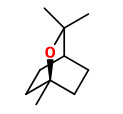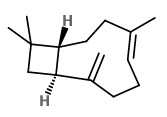Comptonia peregrina (L.) Coult. - Myricaceae - sweetfern, sweet ferns, Farnmyrte
Deciduous subshrub or shrub, 0.5-1.5m tall, native to eastern North America.
„The name “sweetfern” comes from the fern-like appearance of its leaves and the sweet, spicy fragrance they release when crushed. The fragrance of sweetfern is one of its most distinctive features. When you crush the leaves, they release a rich, spicy aroma that’s often described as a mix of balsam and spice. It’s a refreshing scent that can fill the air, especially after a rain or in the early morning dew.“
Native Plant Connection: Sweetfern - Comptonia peregrina retrieved 2025-08-23
„The leaves of the plant are linear to lanceolate, 3–15 cm (1.2–5.9 in) long and 0.3–3 cm (0.1–1.2 in) broad, with a lobed margin; they give off a sweet odor, especially when crushed… The aromatic leaves (fresh or dried) are also used to make a tea. The Canadian author Catharine Parr Traill includes it in her book The Female Emigrant's Guide in a list of substitutes for China tea. When boiled, she notes, it has a slightly resinous taste, with a bitter flavour, that is not very unpleasant.“ wikipedia
„Essential oil extracted from Comptonia peregrina (L.) Coulter (sweet fern) harvested in the lake Saint-Jean area (Québec) has been analysed using GC-MS and Kovats indices techniques. The main identified products are (E)-2-hexenal (16.8–19%), β-caryophyllene (10.7-13.3%), 1,8-cineole (9-10%), myrcene (5-7%), and linalol (4-5.4%).“
[Collin, Guy J., et al. „Extraction and GC‐MS analysis of the essential oil of Comptonia peregrina (L.) coulter.“ Flavour and fragrance journal 3.2 (1988): 65-68]
The essential oil contained many monoterpenoids like α-pinene (3.1%), myrcene (7.3%), 1,8-cineole (9.7%), and γ-terpinene (4.2%) as well as sesquiterpenoids like β-caryophyllene (27.0%) and α-humulene (1.3%), α-/β-selinene, γ/δ-cadinene, and (E)-nerolidol (2.3%) as main components.
C.peregrina hydrosol contained 296 mg/L of VOCs with cis-3-hexenol (11.0%), trans-2-hexenol (12.9%), hexanol (7.6%), benzaldehyde (5.0%), 1,8-cineole (16.8%), linalool (9.7%), terpinen-4-ol (7.1%), and α-terpineol (10.7%) as main components.
[Collin, Guy, and Hélène Gagnon. „Chemical composition and stability of the hydrosol obtained during the production of essential oils. III. The case of Myrica gale L., Comptonia peregrina (L.) Coulter and Ledum groenlandicum Retzius.“ American Journal of Essential Oils and Natural Products 4.1 (2016): 07-19]
„Comptonia peregrina (L.) Coulter, a native plant from Canada used in traditional medicine against cancer, was extracted by hydrodistillation. Two fractions were collected, one over 0–30 min and one over 30–60 min, to assess the influence of time of hydrodistillation on the composition of essential oil. The chemical composition of these two extracts was determined by GC and GC-MS analyses. Fifty five components were identified: β-caryophyllene (23.69% and 15.16%) and α-humulene (9.67% and 7.43%) were the major components in the 0–30 min and 30–60 min fractions, respectively, while β-myrcene was detected in a higher amount in the 0–30 min fraction (12.58%) than in the 30–60 min fraction (0.15%).“
Minor components were also oxygenated compounds like 1,8-cineole, linalool, safrol, (E)-nerolidol, caryophyllene oxide, and germacrone e.g.
[Sylvestre, Muriel, et al. „Composition and cytotoxic activity of the leaf essential oil of Comptonia peregrina (L.) Coulter.“ Phytotherapy Research: An International Journal Devoted to Pharmacological and Toxicological Evaluation of Natural Product Derivatives 21.6 (2007): 536-540]
„Comptonia peregrina (L.) J.M. Coult. (sweet ferns) are aromatic and secrete resin from numerous capitate- stalked glands on the leaves, especially on the lower surface. Our study is the first to report antimicrobial activity from C.peregrina. Two separate extracts of C.peregrina aerial parts and leaves inhibited S. aureus and C.albicans with the respective inhibitions zones of 9/15 and 14/12 mm (Table 1). Twenty- seven compounds have been identified in the essential oil of sweet ferns with the following probably accounting for the observed antimicrobial activity of extracts and include cineol, gamma terpinene, and caryophyllene in the highest concentrations (Halim and Collins, 1973; Lawrence and Weaver, 1974).“ [Borchardt, Joy R., et al. „Antimicrobial activity of native and naturalized plants of Minnesota and Wisconsin.“ Journal of medicinal plants research 2.5 (2008): 98-110] PDF

Comptonia peregrina, Photo credit: dogtooth77 (2009) CC BY-SA 2.0 https://www.flickr.com/photos/53817483@N00/3652089573/





